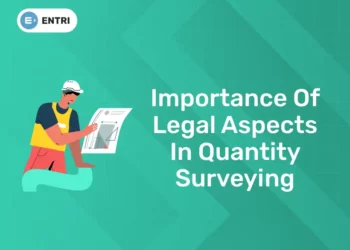Table of Contents
Tenses are verb forms (went, go, will go) which English speakers use to talk about the past, present, and future in their language. There are twelve tense forms in English as well as other time expressions such as used to. For English learners, knowing how to use English tenses can be quite a challenge. Present Perfect Continuous Tense- Usage and Examples will be discussed below.
Speak confidently and fluently with our Spoken English Course!
The present perfect continuous (also called present perfect progressive) is a verb tense which is used to show that an action started in the past and has continued up to the present moment. The present perfect continuous usually emphasizes duration, or the amount of time that an action has been taking place.
Definition of the Present Perfect Continuous Tense
The Oxford Learner’s Dictionary defines the it as a tense that is used to ‘talk about an action or activity that started in the past and continues now or has only just stopped’.
Formula and Structure of the Present Perfect Continuous Tense
It can be formed by following the formula given below.
| Subject + have/has + been + present participle (verb+ing) + the rest of the sentence |
Like every other tense, the sentence structure of the present perfect continuous tense can be analyzed in its positive, negative, interrogative, and negative interrogative kinds of sentences.
| Structure of the Present Perfect Continuous Tense | |||
| Positive | Negative | Interrogative | Negative Interrogative |
| Subject + have/has + been + present participle + the rest of the sentence | Subject + have/has + not + been + present participle + the rest of the sentence | Have/has + subject + been + present participle + the rest of the sentence | Have/has + subject + not + been + present participle + the rest of the sentence.
(or) Haven’t / hasn’t + subject + been + present participle + the rest of the sentence |
Examples:
|
Examples:
|
Examples:
|
Examples:
|
Join our Spoken English program today and communicate with ease!
The present perfect continuous tense uses two helping verbs and a main verb in the present participle form. The helping verbs used ‘have’ or ‘has’ along with ‘been’. These verbs are followed by the present participle of the main verb, which is formed by adding an ‘ing’ to the base verb.
Uses
The present perfect continuous tense can be used for the following reasons:
- It can be used to represent the progress of an unfinished action that started in the past until now.
- It can be used to depict a finished action that started in the past and just stopped recently.
- It can also be used to denote a temporary or habitual action that started in the past and continues in the present.
Examples
The following table shows some of the examples to see how it is used differently with different pronouns and nouns.
| Examples of Present Perfect Continuous Tense | |
| Pronouns / Nouns | Examples |
| I | I have been working as a Admin for two years. |
| You | You have been working as a Admin for two years. |
| We | We have been working as Admin for two years. |
| He | He has been working as a Admin for two years. |
| She | She has been working as a Admin for two years. |
| They | They have been working as Admin for two years. |
| It | It has been drizzling for a week now. |
| Singular noun | ABC has been working as a Admin for two years. |
| Plural noun | ABC and XYZ have been working as Admins for two years. |
Differences between Present Perfect Continuous Tense Vs Present Perfect Tense
Most of the learners have a dilemma when it comes to choosing between the present perfect tense and the present perfect continuous tense
| Present Perfect Tense | Present Perfect Continuous Tense |
| The present perfect tense is used to represent actions or events that have started and completed in the recent past and still have its effect in the present. | The present perfect continuous tense, on the other hand, is used to depict an action or event that started in the recent past and is still continuing at the time when the speaker is referring to it. |
| For example: Prem has worked as a teacher for two years. | For example: Prem has been working as a teacher for two years. |
| The above sentence means that Prem has worked as a teacher for two years and works or does not work as a teacher anymore. | The above sentence means that Prem has been working as a teacher for two years and is still working as a teacher now. |
Test Your Understanding of the Present Perfect Continuous Tense
Fill in the blanks with the present perfect continuous form of the verb in the following sentences:
- I ____________ (watch) this movie for two hours.
- Ram ____________ (ask) for you.
- Indira ___________ (sleep) all day.
- Jai and Sham _____________ (plan) to go to UAE next week.
- _______ you ____________ (look) for this valet?
Find out if you have used the right form of the verb by checking the answers given below.
- I have been watchingthis movie for two hours.
- Ram has been askingfor you.
- Indira has been sleepingall day.
- Jai and Sham have been planningto go to UAE next week.
- Haveyou been looking for this valet?
Elevate your speaking skills with our Spoken English Course!
FAQs on the Present Perfect Continuous Tense
- Define present perfect continuous tense?
Ans. The present perfect continuous tense is employed in a sentence to indicate an action that started in the recent past and is continuing in the present.
- What are the rules to be followed when using the present perfect continuous tense?
Ans. The present perfect continuous tense uses two helping verbs and a main verb in the present participle form. The helping verbs used ‘have’ or ‘has’ along with ‘been’.
- What is the formula of the present perfect continuous tense?
Ans. Subject + have/has + been + present participle (verb+ing) + the rest of the sentence
| Related Articles | |
| Interrogative Sentence | Present continuous tense |
| What are Prepositions | Helping verbs |
| English Grammar Learning Tips | Mastering the Tenses in English |










